Biography
Estela Cabezas
At the age of 5 he began studying piano and at the age of 7 he won first place in the piano competition organized by the Chopin Group of Temuco.
He began his studies at the Conservatory of Music in Temuco.
In 1944 he married and moved to Santiago, where he continued his studies of piano with Rosita Renard and René Amengual, as well as composition, harmony and counterpoint with Pedro Humberto Allende and later, between 1960-61, with Federico Heinlein, Juan Orrego Salas and Juan Pablo Izquierdo at the Department of Music of the Pontificia Universidad Católica.
He wrote works for solo piano, cello and piano, voice and piano; choir.
The style developed by the composer is considered neo-romantic with a certain tendency to impressionism and moderate use in some works of stylized folkloric elements (tonada and zamba airs). All within a traditional harmonic scope.
Raquel Bustos, musicologist and author of the book "La mujer compositora y su aporte al desarrollo musical chileno" published in 2013, highlights nine women for their dedication to the discipline, among them Estela Cabezas Espinoza.
- Tarantella, work for piano:
https://www.youtube.com/watch?v=aOJwCIc4NUg
- Homage to Estela Cabezas and donation of documents to the Music Archive of the National Library of Chile:
https://www.youtube.com/watch?v=-5kpEArO3yQ
- Saudade, Duo for Cello and Piano, performed by FOJI students.
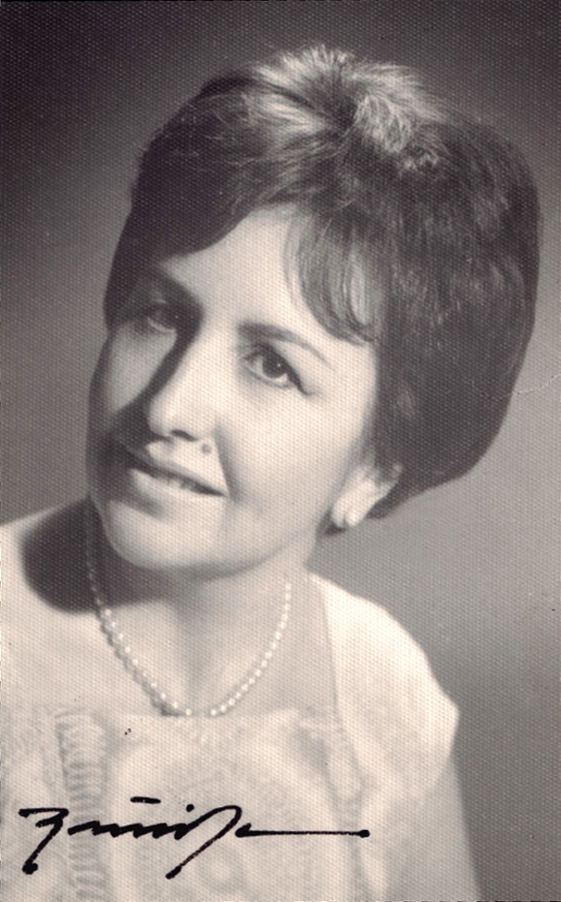
The pedagogical vocation awakened in Estela Cabezas when she became a mother, wishing to train her first three children musically. Later, in the 60's, teaching piano lessons with the traditional system, she observes how arid and exclusive the study of music and an instrument is for most children.
Estela Cabezas researched and looked for other alternatives and not finding one that convinced her, she began to experiment looking for ways to reach children who did not have special conditions for the discipline of learning music.
From his natural welcoming, affectionate and generous disposition, without discriminating against any child because of his or her greater or lesser abilities, considering the different learning processes, he began the creation of what he later called the Música en Colores method, a method that considers the child's perceptive world and interests with playful, sensorial, aesthetic, visual and auditory resources where children play and learn, stimulating their creativity and developing their musical abilities.
In family archives, Estela Cabezas expresses: "I dedicated more than 10 years of research and experimentation to this project, until my search resulted in the didactic work called Música en Colores, published after another 10 years by Ediciones Universitarias de Valparaíso in 1980".
estela cabezas milestones
timeline
1969
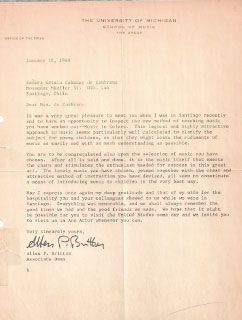
He travels to New York and exhibits at the University of Michigan.
1971
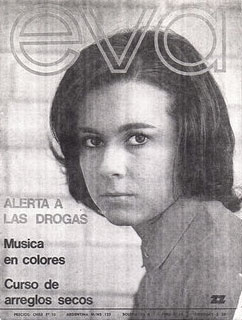
In the 1970s, the pedagogical work of Estela Cabezas was published in newspapers and magazines, such as the following image from the magazine EVA, No. 1355 of May 14, 1971.
1972
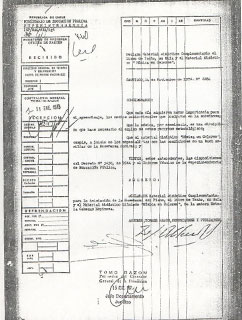
At the national level, on November 24, 1972, the Ministry of Education declared the textbook, its guide and the didactic material Música en Colores (Music in Colors) for the initiation of piano teaching as complementary didactic material.
1981
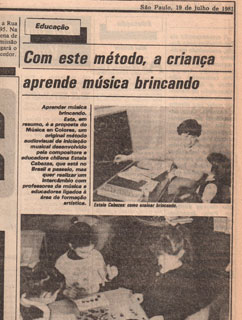
Years later, in Brazil, the "Jornal de Sao Paulo" published: The method developed by the Chilean composer Estela Cabezas, has an eminently playful character, consisting of a series of games and entertainment with songs and didactic material. Each musical note is represented by a color and its values by square and rectangular figures that provide a correct and simplified spelling of the sound, making children learn with their eyes, ears and touch, since the abstract elements of music are delivered in an objective and palpable way.
1983

In Spain, the outstanding teacher María Cateura, professor of the Municipal Conservatory of Barcelona, says: "...I consider the method to be of great interest for the initiation of music, apart from the fact that it is very original and presents the contents with a perfect graduation of the difficulties. I have presented it and commented on it to my students of pedagogy at the conservatory...".
In Germany she teaches in a home for teenage girls. Even with the difficulty of the language, the girls respond to her classes, understand and learn music in an easy, fast and enjoyable way. Felicitas Russ, director of Haus vom Guten Hirten in Cologne, says: "This system of learning involves the whole person, hearing, sight, emotions, sensitivity to color and touch. The whole system is very clear. The set of all these phenomena acts on these young people as a real healing. The order that the method requires has an impact on their lack of orientation, encouraging their ability to concentrate...".
1984
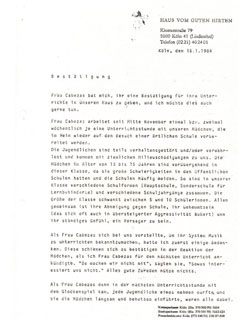
Also in Germany, Professor Dr. Ludolf Lützen, Cologne, Germany, January 24, 1984, reports: "...the work carried out by Mrs. Cabezas convinces us, especially because of its logical structure....
1984
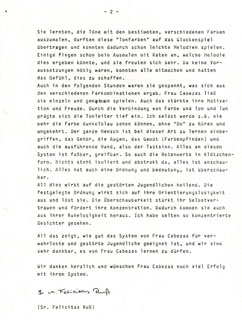
...the use of pedagogical materials and the inclusion of symbols representing various parameters such as the duration of tones, their pitch and others".

